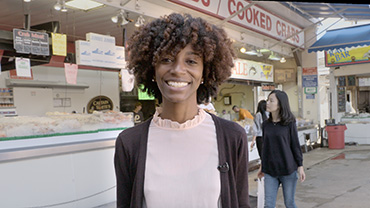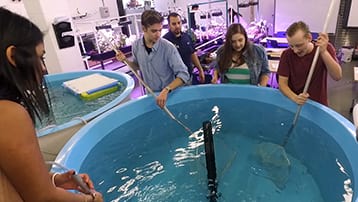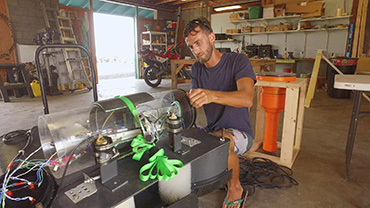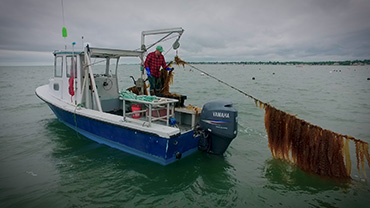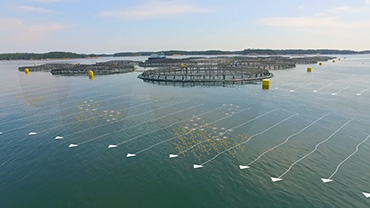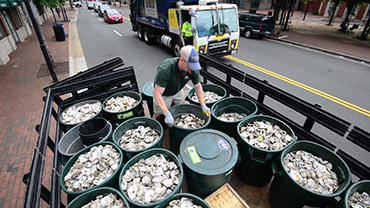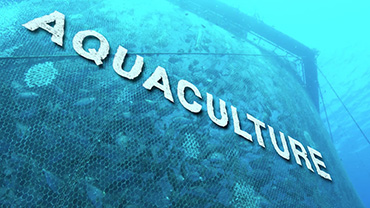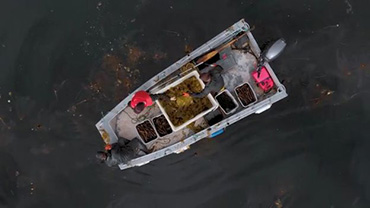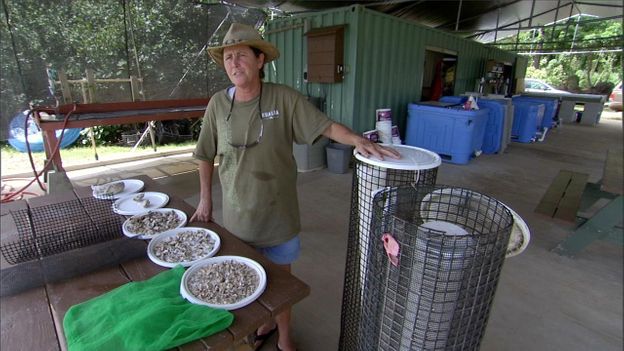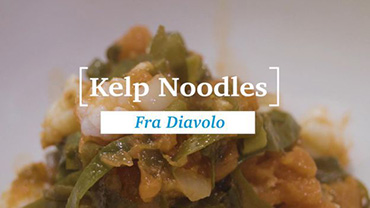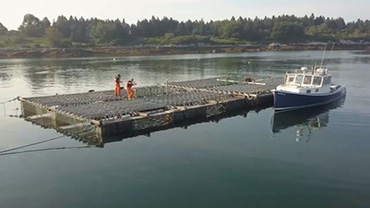Transcript
NARRATOR:
Demand for seafood is increasing around the world, and the United States is no exception. Providing enough fish for a growing seafood demand requires a little innovation. Here at True North Aquaculture, indoor water tanks are where it all begins. A fish like this can hold up to five thousand eggs.
Oh ya look at the size of those eggs, oh ya. Good eggs.
To make sure that juvenile salmon thrive, the water in the tanks is carefully monitored, to try to mimic the rivers the fish would normally hatch in.
If we don't have clean water, we can't grow our product. Our salmon require the cleanest waters that are available. So if we're monitoring dissolved oxygens, temperatures, PH we very strictly monitor how much feed goes into each tank.
As the little fish grow into larger fish, they're moved to different tanks to give fish more room to swim and grow. And eventually just like wild salmon they're ready to go to the ocean.
There are almost 700,000 fish in these floating pens.
Healthy, happy fish!
The netting, like a fence on a traditional farm, keeps the fish in and predators like this seal out. To be sustainable, fish farmers need to deal with the food going in and waste coming out. One way is to improve the feed.
The feed we use has come a long way in 20 years or so. It used to be primarily made out of wild fish. Today we're using only 15 to 20 percent fish in our pellets, so we're much more sustainable today than we were 20 years ago.
Along with more sustainable ingredients, fish farmers are also improving the way they feed the salmon with the use of underwater cameras.
I'm watching them right there and once they start seeing that drops of feed reached their level I'll adjust the camera and take it down. These monitor when salmon are full and prevent buildup of uneaten feed below the net pens.
To take care of fish waste, True North relies on nature. Many parts of Maine have dramatically large and strong tides and those tides work to disperse waste. This waste is mixed with other micronutrients and safely absorbed into the food chain, just like the wastes of wild fish.
Down East Maine is a great place to have salmon aquaculture, it's a lot of flushing action and it's good for the fish to them you know it creates a lot of oxygen for the fish to keep them healthy so it's a perfect place to go for salmon. My father managed a herring plant and I work I worked with
him and when that folded up and you know the wild fishery was done in Maine and so aquaculture was a natural thing for me to jump to.
By growing our seafood locally, these ocean farmers are using the experience they have from commercial fishing, to produce a sustainable source of healthy protein, while also creating work that is meaningful, and even fun.
People that work here wanna work because you know it's a good-paying job and you're doing what you love to do you're working on the water running boats running equipment like this you know it takes a boat operator, it takes someone that's got skills with a computer. And it helps the coastal communities you know this would be a very depressed area without the aquaculture industry.
Using traditional knowledge, data, and new technology, keeping fish on the menu is possible.
 An official website of the United States government.
Here's how you know we're official.
An official website of the United States government.
Here's how you know we're official.

